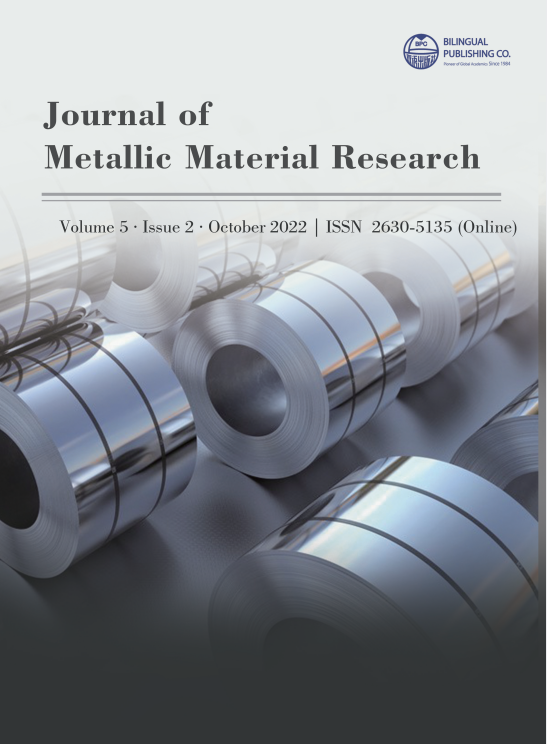-
191
-
169
-
147
-
112
-
101
Spatial Investigation of Nilüfer Stream Arsenic Pollution in Previous and Post COVID-19 Pandemic and Evaluation of Health Risks for Adult People
DOI:
https://doi.org/10.30564/jmmr.v5i2.4741Abstract
This study was carried out in Nilüfer Stream in Bursa City, where intensiveindustrial, agricultural and mining activities are existed. The temporal andspatial variation of arsenic was evaluated by examining its concentrationsbetween March 2015 and December 2021. Values between March 2015and December 2019 were evaluated as pre-pandemic, and values betweenMarch 2020 and December 2021 were evaluated as post-pandemic. Theresults were compared with national and international standards and thechronic and cancer risks were calculated for adults. When the 7-yeargeneral averages were examined, it was seen that the highest concentrationwas 0.0256 mg/L at the 8th Station, and the lowest concentration was0.0182 mg/L at the 1st Station. The reason why the highest value is atthe 8th station was that the wastewater of Nilüfer and Bursa OrganizedIndustrial Zones was discharged to Bursa West Wastewater TreatmentPlant before this station. After the pandemic the raises in concentrationswere observed at all stations, except for the 3rd Station. This shows thatthe pollution load had increased in general during the pandemic. However,it was estimated that there was a decrease in the pollution load of theindustrial wastewater coming to the 3rd Station, which was located afterthe Eastern Wastewater Treatment Plant of the City. It was observed thatall stations examined were higher than drinking water standards and lowerthan irrigation water standards according to WHO and Turkish NationalStandards. All measuring stations were greater than 1 of the hazardquotient (HQ) values. In terms of human consumption risk, all stations hada chronic and carcinogenic risk according to the values before and afterthe pandemic. After the pandemic conditions, the HQ order of the stationswas 8>10>7>9>2>6>4>1>3. In general, post-pandemic HQ values hadgenerally increased and the risk of cancer had increased.Keywords:
Arsenic pollution; Covid-19; Human health risk; Hazard quotient; Nilüfer streamReferences
[1] Mutlu, M., 2010. Arsenic Pollution and Health Risk Assessment in the Groundwater of Simav Plain, Kütahya. Master Thesis, Dokuz Eylül University Graduate School of Natural and Applied Sciences, İzmir.
[2] Henke, K., 2009. Environmental Chemistry, Health Threats and Waste Treatment. John Wiley & Sons Ltd. pp. 575, Chichester, UK.
[3] Başkan, B., Pala, M., 2009. Arsenic Contamination in Drinking Water: An Assessment for Turkey. Pamukkale University. Journal of Engineering Sciences. 15(1), 69-79.
[4] Garelick, H., Jones, H., Dybowska, A., et al., 2009. Arsenic pollution sources. Reviews of Environmental Contamination. 197, 17-60. DOI: https://doi.org/10.1007/978-0-387-79284-2-2
[5] Erdol, S., Ceylan, S., 1997. Determination of arsenic contamination in water samples obtained from Bursa reqion. Journal of Uludag University Faculty of Veterinary. 16, 119-127.
[6] Gemici, Ü., Tarcan, G., Helvacı, C., et al., 2008., High arsenic and boron concentrations in groundwaters related to mining activity in the Bigadiç Borate Deposits (Western Turkey). Applied Geochemistry. 23, 2462-2476. DOI: https://doi.org/10.1016/j.apgeochem.2008.01.013
[7] Karaer, F., Küçükballı, A., 2006. Monitoring of Water Quality and Assessment of Organic Pollution Load in the NiIlufer Stream, Turkey. Environmental Monitoring and Assessment. 114, 391-417. DOI: https://doi.org/10.1007/s10661-006-5029-y
[8] Üstün, G.E., 2011. The Assessment of Heavy Metal Contamination in the Waters of the Nilüfer Stream in Bursa. Ekoloji. 20(81), 61-66. DOI: https://doi.org/10.5053/ekoloji.2011.819
[9] Dorak, S., Çelik, H., 2020. Seasonal Variation of Some Trace Element and Heavy Metal Concentrations in a Turkish Stream. Polish Journal of Environmental Studies. 29(1), 589-600. DOI: https://doi.org/10.15244/pjoes/101617
[10] Aydın, A.O., Gülensoy, H., Akıcıoğlu, A., et al., 2003. The Effect of Arsenic in Colemanites to Boric Acid and Borax Production. Journal of Balıkesir University Institute of Science and Technology. pp. 5-1.
[11] Smedley, P.L., Kinniburgh, D.G., 2002. A Review of the Source, Behaviour, and Distribution of Arsenic in Natural Waters. Applied Geochemistry. 17, 517-568. DOI: https://doi.org/10.1016/S0883-2927(02)00018-5
[12] Bursa Province 2019 Environmental Report, 2019. Bursa Provincial Directorate of Environment and Urban Management. https://webdosya.csb.gov.tr/db/ced/icerikler/bursa_2019_cevre_durum_raporu-20201217210215.pdf (Access on 27 July 2022).
[13] Fianko, J.R., Osae, S., Adomako, D., et al., 2007. Assessment of Heavy Metal Pollution of the Iture Estuary in the Central Region of Ghana. Environmental Monitoring and Assessment. 131, 467-473, DOI: https://doi.org/10.1007/s10661-006-9492-2
[14] Güleryüz, G., Arslan, H., Çelik, C., et al., 2008. Heavy Metal Content of Plant Species along Nilüfer Stream in Industrialized Bursa City, Turkey. Water, Air, and Soil Pollution. 195, 275-284. DOI: https://doi.org/10.1007/s11270-008-9745-5
[15] Agency for Toxic Substances and Disease Registry, 2000. Toxicological Profile for Arsenic. US Department of Health and Human Services, Atlanta, Georgia.
[16] US Environmental Protection Agency (US EPA), 1998. Arsenic, Inorganic. United States Environmental Protection Agency, Integrated Risk Information System (IRIS), (CASRN 7440-38-2). http://www. epa.gov/iris/.
[17] Muhammad, S., Shah, M.T., Khan, S., 2010. Arsenic Health Risk Assessment in Drinking Water And Source Apportionment Using Multivariate Statistical Techniques in Kohistan Region, Northern Pakistan. Food and Chemical Toxicology. 48, 2855-2864. DOI: https://doi.org/10.1016/j.fct.2010.07.018
[18] Radfard, M., Yunesian, M., Nabizadeh, R., et al., 2019. Drinking water quality and arsenic health risk assessment in Sistan and Baluchestan, Southeastern Province, Iran. Human and ecological risk assessment: An International Journal. 25(4), 949-965. DOI: https://doi.org/10.1080/10807039.2018.1458210
[19] US Environmental Protection Agency (US EPA), 2005. Guidelines for Carcinogen Risk Assessment. Risk Assessment Forum, Washington, DC, EPA/630/ P-03/001F.
[20] Khan, S., Cao, Q., Zheng, Y.M., et al., 2008. Health risk of heavy metals in contaminated soils and food crops irrigated with wastewater in Beijing China. Environmental pollution. 152, 686-692. DOI: https://doi.org/10.1016/j.envpol.2007.06.056
[21] TSE-266 (Turkish Standard), 2005. Regulation on water intended for human consumption, Turkish Standards, Ankara.
[22] Singh, R., Singh, S., Parihar, P., et al., 2015. Arsenic contamination, consequences, and remediation techniques: A review. Ecotoxicology and Environmental Safety. 112, 247-270. DOI: https://doi.org/10.1016/j.ecoenv.2014.10.09
[23] Turkish Water Pollution Control Regulation, Regulation modified on Water Pollution Control Regulation, Official gazette No. 26786 (13 February 2008) (In Turkish).




 Aslıhan Katip
Aslıhan Katip






